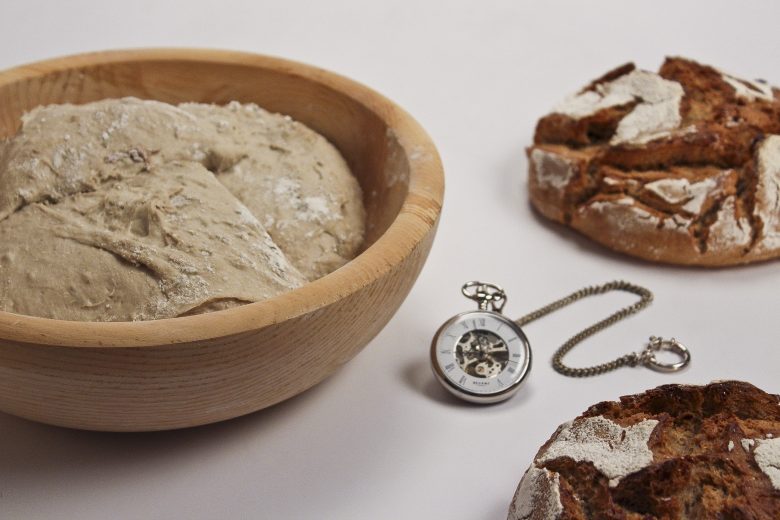Dough Maturity
After kneading, the dough formation is not yet to complete. A dough maturation phase is necessary for further swelling and relaxation. This can usually be done in the kneading bowl or in a lightly oiled dough tub. It is important that the dough is covered during this time. It is covered either with a cloth or with a plastic film. Covering prevents the surface from cooling down and drying out.
This process is often referred to as dough resting, but the dough does not merely rest during this time, it matures. The maturity of the dough becomes visible through the increase in volume that is caused by the fermentation activity of the yeast.
The main reasons for a dough maturity lies in the swelling of the flour ingredients and the necessary relaxation of the gluten. Relaxation is particularly necessary to enable easier dough dividing and shaping.
The duration of the dough rest depends on the following factors:
- The bran content: the higher and coarser the bran content in the dough, the longer it takes to swell
- The flour mixture: The duration of the dough rest increases with the increasing proportion of wheat in the dough
- The process: Directly processed bread doughs require an average of 20-40 minutes to swell and rise the dough. Indirectly processed bread doughs (sourdough breads) only need a short dough rest of 15 minutes, as 40% of the flour components are already swollen and sufficient fermentation gases and flavor substances have already developed due to the longer dough process.
Determining the Dough Maturity
The level of maturity can be described as “young”, “ripe” and “overripe”. The following overview describes the different states of maturity and their effects.
“Young Doughs”
- Dough properties: moist surface, sticky and not very risen
- Baked quality: small volume, small ear, coarse, uneven pores and a mottled crust
“Ripe dough”
- Dough properties: dry, fluffy dough surface and a good body
- Baked quality: large volume, tender crumb, and an aromatic flavor
“Overripe dough”
- Dough properties: very dry, cracked dough surface and a slow volume increase
- Baked quality: scabbed crust, dense, straw-like crumb and a bland taste
The dough maturity can be shortened by:
- Higher dough temperatures
- More intensive kneading
- Increased yeast amount
- Large dough amount
The dough maturity can be delayed by:
- Lower dough temperatures
- Slower kneading
- Lower yeast amount
- Softer dough
- Addition of sugar
- Addition of skimmed milk powder
Stretching and folding the dough
Wheat dough should be stretched one or more times during the long dough ripening period of over an hour. When the dough is stretched, the CO2 formed is expelled and some air is worked into the dough at the same time. With the folding, an improvement in the dough structure is also achieved.


